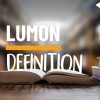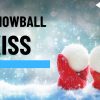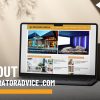Volatile organic compounds, or VOCs, are one of the leading causes of air pollution. They pose an immediate environmental risk to the average individual. VOCs can be both natural and manufactured. They are dangerous because of their volatility, which means the toxins evaporate into the air at room temperature. VOCs are released into the indoor air that we breathe and can cause exposure.
Beyond the danger of their short- and long-term effects, VOCs are particularly hazardous because most of the time, you cannot see or smell them. Learn the following about long-term exposure to VOCs and how you can reduce your risk.
You Can Be Exposed Through Everyday Activity:
Individuals can be exposed to VOCs in a variety of ways. Smoking cigarettes or being in the presence of secondhand smoke, using common household cleaners, working with commercial building and crafting chemicals, or using products that contain formaldehyde or benzene all increase your exposure to VOCs.
There are two ways to be exposed to VOCs. First, you can become exposed by inhaling air that contains volatile compounds. In addition, you can become exposed when your skin comes into contact with products that contain and release VOCs. Formaldehyde is one of the largest contributors to environmental pollution via VOCs because of the significant amount of residential, commercial, and personal products that contain it.
Long-Term Exposure Can Cause Serious Issues:
The danger of VOC exposure varies depending on the amount of VOCs in the air, the length of time you have been exposed, and how often you are exposed to it. Short-range exposure can garner a variety of symptoms, including headaches, dizziness, irritation to the eyes, and memory issues.
Being exposed to VOCs for longer periods can induce more serious symptoms. They can include consistent eyes, nose, and throat irritation; nausea; loss of coordination; prolonged periods of fatigue; damage to your liver, kidneys, and central nervous system; and in some cases, even cancer.
It’s Possible to Reduce Your Risk:
To limit your risk of VOC exposure, it is advised to reduce the amount of time you spend breathing in air that contains VOCs. Likewise, limit the time you spend using chemicals that contain and release VOCs, such as household cleaners or commercial crafting supplies. Whenever possible, buy and use naturally sourced cleaning supplies, cosmetics, or other personal items.
Taking measures to improve air quality can also help to reduce symptoms and any long-term damage. The installation of features such as air-cleaning ventilation systems can improve your air quality. These systems help take out the air that contains VOCs inside your home and replace it with preconditioned fresh air.
Volatile organic compounds are an immediate threat and can cause harmful long-term symptoms. However, there are ways you can protect your health. Start by limiting your exposure to air that contains VOCs. In addition, install ventilation systems to replace contaminated air inside your home. It doesn’t take a lot to make a difference, but it can save you from some serious health concerns in the long run.
Read Also:






















